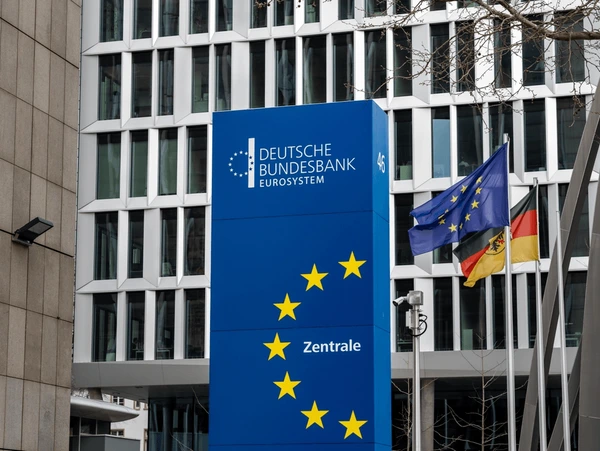Bundesbank warns borrowing path risks credibility
Bundesbank warns Germany’s debt path unsustainable; Bund yields near 2.45% while (INDEX:DAX) remains firm. (ETR:SIE) and (ETR:MBG) benefit from exports even as manufacturing shrinks.

Germany enters 2026 confronting a tension between fiscal orthodoxy and macroeconomic necessity. The Bundesbank warns that Germany must return to “sound finances,” arguing that elevated federal borrowing risks undermining long-run credibility. Federal debt has risen to 65 percent of GDP, up from 59 percent three years prior, driven by energy subsidies, defense spending, and corporate support during the European manufacturing recession.
The warning is anchored in measurable deterioration of fiscal parameters. Germany’s fiscal deficit sits at 3.8 percent of GDP, exceeding the European Stability Pact threshold. Interest expense now absorbs 9.5 percent of federal revenue, triple the share from five years earlier. The Bundesbank’s concern is not debt size but debt trajectory: projected deficits imply Germany could surpass 70 percent debt-to-GDP by 2028 without policy adjustment. The last time Germany entered a similar zone of fiscal drift—2011—the result was a rapid consolidation that weighed on output.
The mechanism amplifying the risk is capital rotation. Investors are demanding higher compensation for holding German debt despite its safe-haven status. The spread between German Bunds and Swiss confederation bonds is the widest since 2012. Ten-year Bund yields are holding near 2.45 percent, but term-premium models imply upward pressure if deficits persist.
Markets have not reacted negatively yet because Europe benefits from ECB credibility and subdued inflation. The DAX (INDEX:DAX) continues to trade near highs, supported by export-heavy firms such as Siemens (ETR:SIE) and Mercedes-Benz (ETR:MBG). However, corporate surveys reveal reluctance to accelerate capex without clarity on energy pricing and tax policy. German manufacturing output contracted 1.6 percent year-on-year, its ninth consecutive negative print.
Structurally, the issue extends beyond budget math. Germany’s energy transition raised industrial input prices, weakening the competitiveness of its manufacturing model. Unlike Spain or the Netherlands, Germany has not yet attracted large-scale near-shoring investment inflows. FDI inflows fell 18 percent last year, the lowest since 2013.
Going forward, Germany will either reaffirm fiscal discipline or adopt a more flexible investment-driven model. The Bundesbank favors front-loaded consolidation: reduce discretionary spending by 0.8 percent of GDP and reinstate the debt brake. The government prefers investment stimulus, arguing that digitization and defense spending generate long-term returns. The balancing point will appear in three indicators: Bund yields staying below 2.60 percent, investment growth turning positive, and manufacturing PMI holding above 50 by Q3 2026.
The fiscal identity Germany chooses in 2026 will define Europe’s capital-flow architecture for the next cycle.





